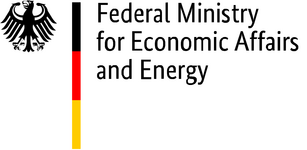TELOS – Thermo-Electrically Optimised Aircraft Propulsion Systems
Within TELOS, TUM develops innovative manufacturing processes and a material characterization routine for prepreg material for the application in thermo-electrically optimized aerospace propulsion systems.
Project Partners
Airbus Defence and Space GmbH, Airbus Operations GmbH, Karlsruher Institut für Technologie, Siemens AG / Rolls-Royce Deutschland Ltd und Co. KG, Neue Materialien Bayreuth GmbH
Duration
01.01.2016 – 31.12.2020
Funding authority
Federal Ministry for Economic Affairs and Energy
Motivation
The development of optimized propulsion systems for hybrid electric flying opens new fields of application for composites, e.g. the rotor housing of a lightweight generator. Since these applications require materials with special thermal and electrical properties, there is a need for new materials. Therefore, Neue Materialien Bayreuth manufactures prepregs with fillers in the matrix while TUM manufactures components via Automated Fiber Placement (AFP) using these materials. The fillers not only change the properties of the materials in the cured state but also in the uncured (processing) state, which influences the material-process interaction during production. Cost-efficient, automated processing of the prepreg materials is therefore only possible when the manufacturer has precise knowledge about the material properties.

Method
For process development and material characterization for Automated Fiber Placement (AFP), we first identified all production-relevant material properties and evaluated corresponding test methods. Here, we paid special attention to the tackiness of the material. Since there are no test standards for this property, we developed a new test method, which enables a reliable peel test of the prepreg tack. In addition to the material characterization with newly developed material as well as with reference material in different aging states, we conducted lay-up trials with an AFP machine. We investigated the correlation between changing material properties and the occurrence of lay-up defects during deposition along non-geodetic paths (steering). For the process development, we focused on the integration of an online QA system and the development of a scenario for mass production. All results are finally incorporated into the manufacturing of a full-size demonstrator component.
Publications
Heller, K., Seyfferth, S., Kind, K., Drechsler, K.: A Post Lay-up Tack Peel Test for Aerospace Grade Prepreg Tapes. In: Proceedings SE Conference Amsterdam 20, SAMPE Europe Conference and Exhibition 2020, Amsterdam, Netherlands, 29 September – 1 October 2020
Heller, K., Hallmannseder, M., Colin, D., Kind, K., Drechsler, K.: Comparing Test Methods for the Intra-ply Shear Properties of Uncured Prepreg Tapes. Science and Engineering of Composites. 2020; 27:89-96, https://www.degruyter.com/view/journals/secm/27/1/article-p89.xml?language=en
Heller, K., Hallmannseder, M., Colin, D., Kind, K., Drechsler, K.: Comparing Test Methods for the Deformation Behavior of Uncured Prepreg Tapes. ACM4 - The Fourth International Symposium on Automated Composites Manufacturing, 2019
Heller, K.; Böckl, B.; Ebel, C.; Drechsler, K.: Influence of Prepreg Aging and Tack on Lay-Up Effects/defects in Thermoset Automated Fiber Placement. ECCM18 - 18th European Conference on Composite Materials, 2018, https://az659834.vo.msecnd.net/eventsairwesteuprod/production-pcoconvin-public/bef692fd348c4c04b4ba79f4b814f239
Acknowledgement
The chair thankfully acknowledges the funding provided by the German Federal Ministry for Economic Affairs and Energy under the scheme “Luftfahrtforschungsprogramm LuFo V-2” (“TELOS - Thermisch-elektrisch optimierte Luftfahrtantriebssysteme”, funding code: 20Y1516F).

Contact Persons
Dr.-Ing. Swen Zaremba